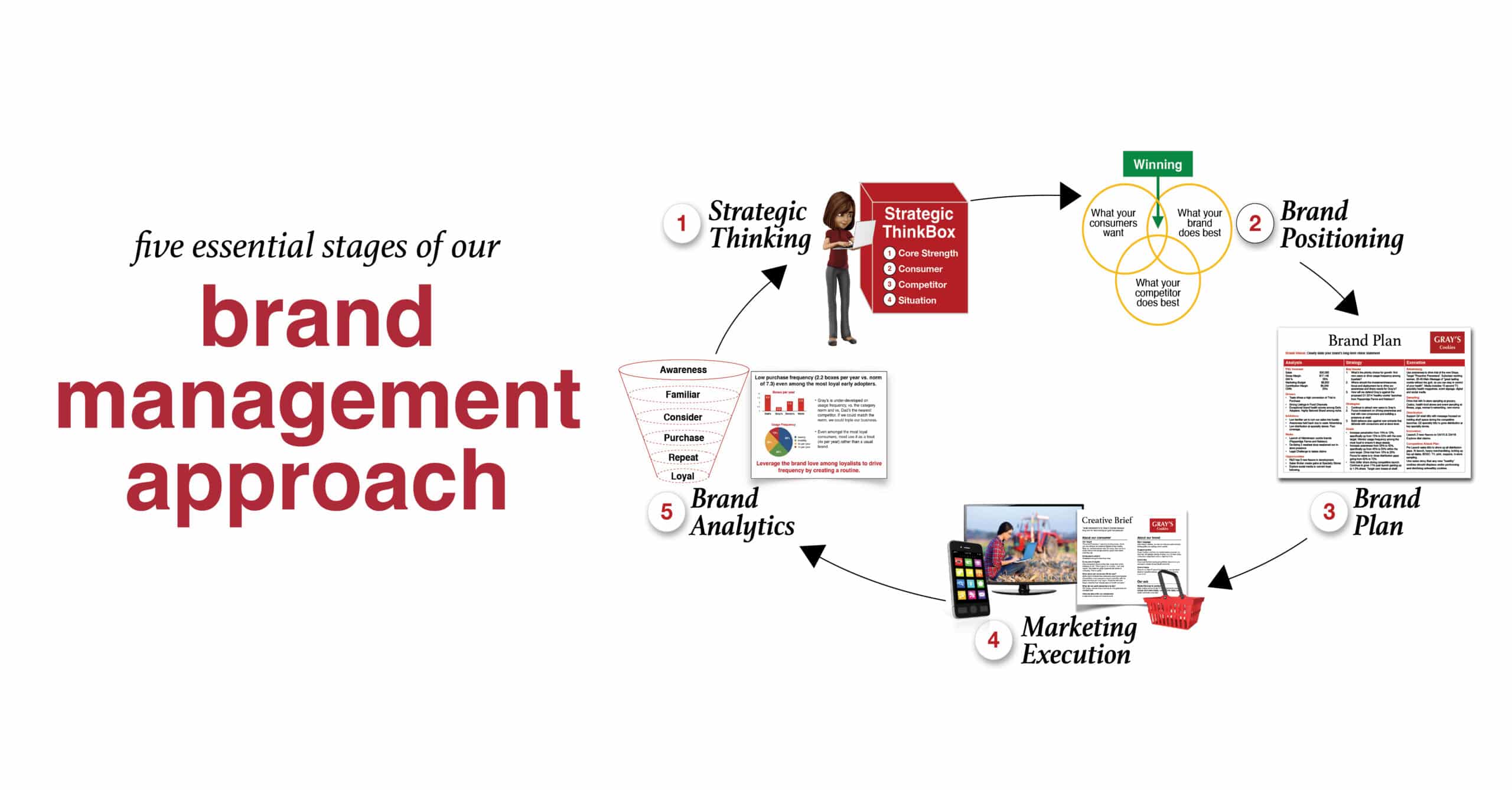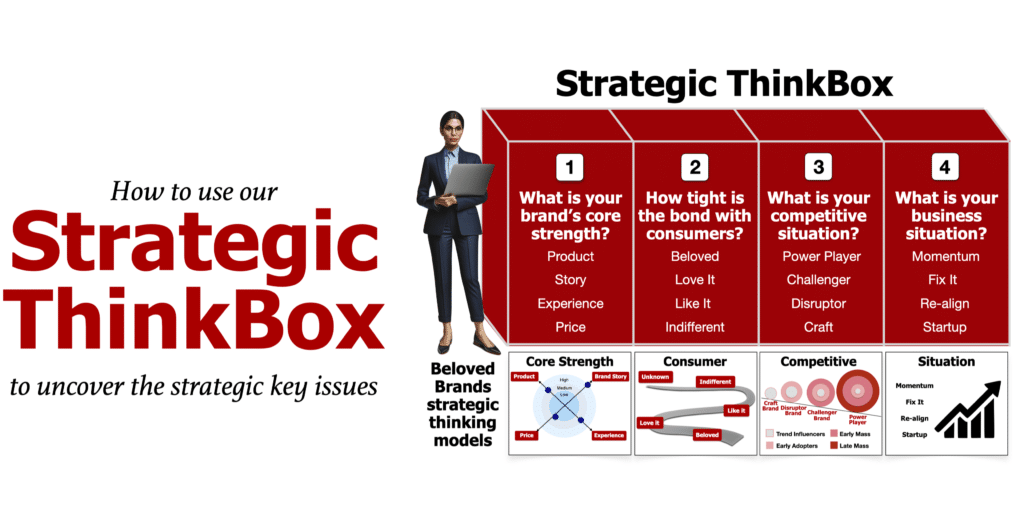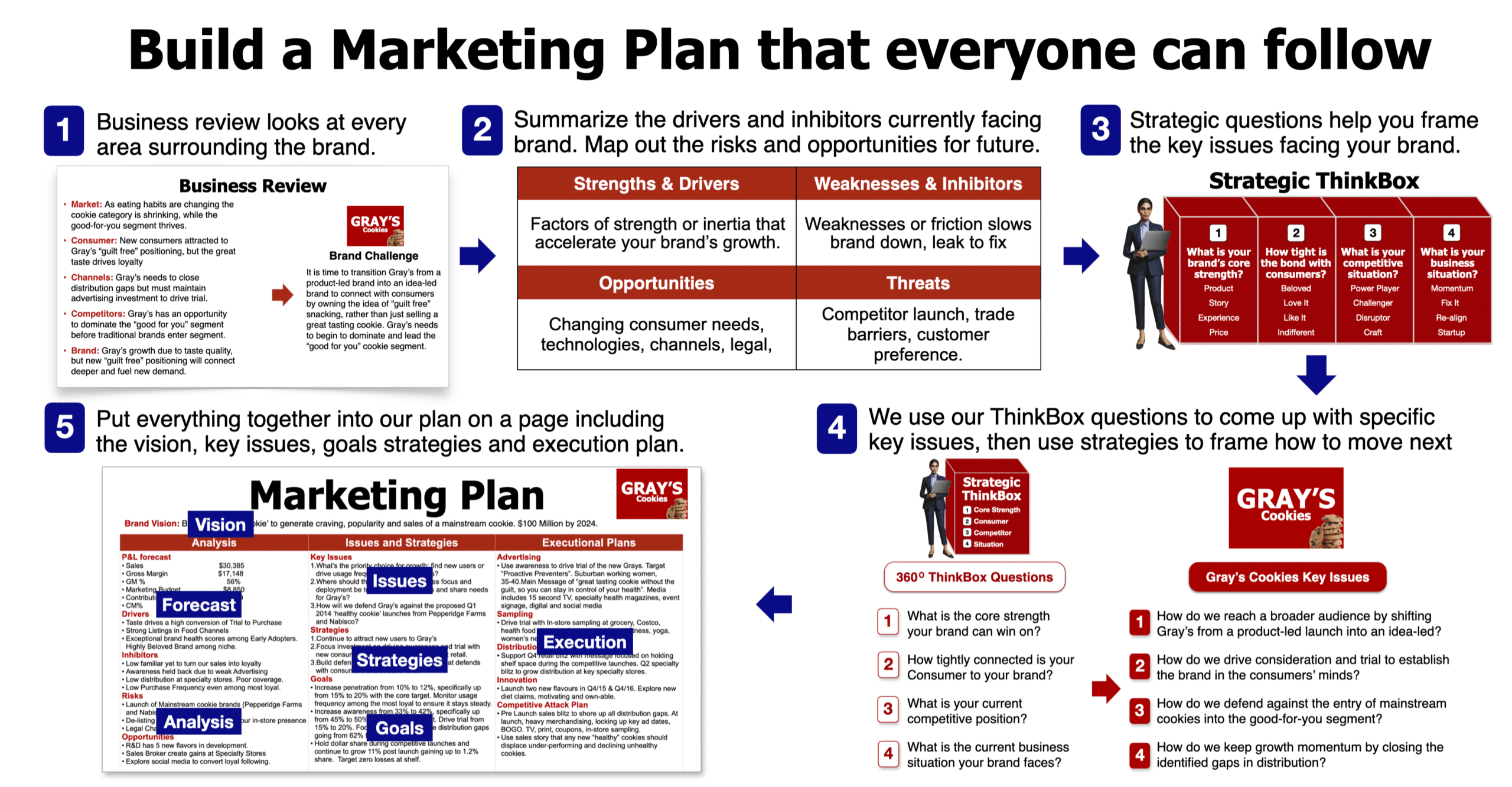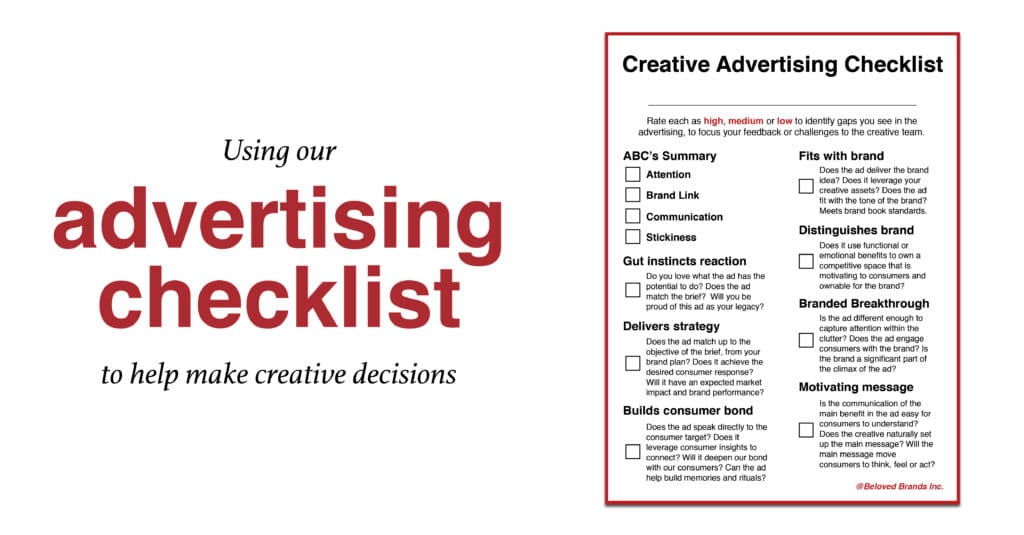The five stages of our 360-degree brand management process include strategic thinking, brand positioning, brand plans, marketing execution, and marketing analytics. When I started out in marketing, I remember thinking “where does it all start, and where does it finally end?” The harsh reality is that it never ends. It just keeps going. After you execute, you should analyze. And, that sets up your strategic thinking. Then, your strategic thinking impacts how you define your brand, how you build your brand plan which then impacts next year’s execution. The best brand leaders in the world are strong in all five of these stages of brand management.
To illustrate, click on brand management process to see details.
Strategic thinking
The first stage of brand management approach is strategic thinking. I always think that strategic thinkers see “what-if” type questions before they look for potential solutions. Have you ever been to a meeting and heard someone say, “That’s a good question”? This is usually a sign someone has asked an interruptive question designed to slow everyone’s brain down, so they take the time to reflect and plan before they act, to force them to move in a focused and efficient way. A strategy is the thinking side of marketing, both logical and imaginative.
Strategic people are able to map out a range of decision trees that intersect, to imagine how events will play out in the future. The risk is that if they think too long, they just spiral around, unable to decide. They miss the opportunity window.
As the smartest strategic thinkers ask questions, I want to introduce four strategic questions that force you to look at the brand’s core strength, consumer strategy, competitive situation, the brand’s situation, and how engaged your consumers are with the brand.
- First, what is the core strength your brand can win on?
- Then, what is your current competitive position?
- Next, how tightly connected is your consumer to your brand?
- Finally, what is the current business situation your brand faces?
You will see in this model, that for each of the four questions, you are forced to pick ONE of the four potential choices.
To illustrate, click on the Strategic ThinkBox to see how it helps your brand management process.
Brand positioning
The second stage of our brand management approach is brand positioning. Before you can randomly choose what the big idea for your brand will be, there is homework to be done around defining the brand positioning statement, to help decide who the brand will serve and what the brand will stand for. A smart brand positioning statement should narrow the target to those consumers who are most capable of loving what the brand does. The brand positioning should find the ideal balance between functional and emotional benefits.
There are 4 elements that make up a brand positioning statement, including who will you serve, where you play, where will you win, and why consumers should believe you. These are the consumer target, marketplace definition, consumer benefit, and support points.
Brand Positioning questions
- Who is your consumer target? What slice of the population is the most motivated by what your brand offers? Do not just think about who you want, but rather who wants your brand.
- Where will you play? What is the competitive set that defines the space in the market your brand competes in? Positioning is always relative to whom you compete against. For instance, a brand is never fast, it is faster than everyone else.
- Where will you win? What is the main consumer benefit promise you will make to the consumer target, that will make your brand stand out as interesting, simple, unique, motivating, and ownable? Do not talk about what you do (features). Talk about what the consumer gets (functional benefits), and how the brand makes them feel (emotional benefits).
- Why should they believe us? Understand what support points and features are needed to back up the main promise. These support points should close any potential doubts, questions, or concerns the consumer has after hearing the main promise.
To illustrate, click on the brand positioning and brand concepts which are part of the brand management process.
Marketing Plans
The third stage of our brand management approach is Marketing plans. Have you ever noticed that people who say, “We need to get everyone on the same page” rarely have anything written down on one page? The same people who use the term ‘fewer bigger bets’ are the same people who are fans of those cool little projects that deplete resources. People say they are good decision-makers, yet struggle when faced with two distinct choices, so they creatively find a way to justify doing both options.
The plan is a decision-making tool
A strategic Marketing Plan must force your hand in how you allocate your brand’s limited resources to ideas that drive the highest return. The plan must align everyone who works on the brand towards a common vision and goals. The plan is a decision-making tool to alignment on investment, deployment of people, key strategies, tactics, goals, and projects. It should even guide the brand leader who wrote it, to deliver on all key decisions.
When you start your Marketing Plan, one of the worst possible things that you could do is open up a document and start to type away on a blank page. You will either get writers-block or assemble a complete mess. Remember back to when you wrote a term paper in college, the essay was always easier and better when you took the time to write out a rough draft format before you started the final document.
The plan helps to communicate the brand direction
Start with a draft outline of your brand vision, analysis, key issues, strategies, execution, and measurement. Use the five strategic questions to write out 3 bullet points for each of the 5 strategic questions.
Throughout the planning process, you should keep coming back to this document to ensure your plan tells the entire strategic story. Just before you get up and present to your management, use this worksheet to ensure your entire story flows well. You can even use this as your first slide of the presentation to guide the team through your strategic story.
To illustrate, click on the marketing plan process as part of brand management.
Beloved Brands Marketing Training
To view, use the arrows to see our Beloved Brands Marketing Training program brochure.
It's time to elevate your marketing team's performance with our Beloved Brands Marketing Training program.
Our marketing training makes your marketers smarter with brand analytics, strategic thinking, brand positioning, brand plans, and marketing execution.
Marketing Execution
The fourth stage of our brand management approach is marketing execution.
All marketing execution must creativity deliver the brand story, to motivate consumers to see, think, act or feel differently than before they saw the brand message. While many executions are designed to satisfy short-term business needs, every execution must express the brand’s big idea in ways that build the brand’s long-term reputation with consumers.
If the market execution does not tighten the bond with consumers, it should be considered a failed business investment. The most creative brand leaders must inspire the experts who will produce smart and creative execution of the strategic plan, to win over consumers and move them to think, feel and act in ways that tighten the consumer’s bond with the brand.
Brand leaders must figure out ways to judge creative ideas, make decisions, provide inspiring direction to the experts they employ. They must think with strategy and decide with instincts, with the goal to find work their consumers will absolutely love. Marketers have to know how to judge creative advertising to find the right balance of creativity and strategy, so the work that goes into the marketplace is both different and smart. Advertising has to be different enough to break through in a cluttered world, yet smart enough to motivate consumers in ways that help the brand.
A brand leader must be the first to love the executions put into the marketplace. If they do not love the work, how can they expect their consumer to fall in love with the brand? The best decision-makers use a balance of instincts and strategy.
The ABC's of Advertising: Attention, brand link, communication stickiness
Here are four questions to ask:
- First, is it the creative idea that earns the consumer’s attention for the ad?
- Then, is the creative idea helping to drive maximum brand link?
- Next, is the creative idea setting up the communication of the main consumer benefit?
- And, is the creative idea memorable enough to stick in the consumer’s mind and move them to purchase?
To illustrate, click on the ABC’s of advertising to see details.
I use a ‘Gut Instincts Checklist’, that looks at the love the ad, link to brand strategy, the ad’s ability to motivate consumers, to see if the creative idea the central driving force to gain attention, to showcase the brand, to communicate the brand’s main benefit and to help the brand stick in the consumer’s mind and heart.
To illustrate, click on the advertising checklist to see details.
Beloved Brands playbook
Our Beloved Brands playbook goes in depth on everything you need to build a brand consumers will love. Learn to about strategic thinking, brand positioning, writing brand plans, advertising decisions, media planning, marketing analytics, and financials.

Our readers tell us they keep our Beloved Brands playbook close by for whenever they need to take on a new project. Clearly, we are thrilled that 89% of Amazon reviewers have given Beloved Brands a 5-star rating. Also, we wrote a B2B Brands playbook and a Healthcare Brands playbook.
Brand Analytics
The fifth stage of our brand management approach is marketing analytics. One of the biggest skill gaps for many Marketers is the ability to develop an analytical story to set up smart decisions. They either struggle to dig into the data or they struggle to tell a strategic story that summarizes the mounds of data they have gathered. They must use facts to support their opinions or what they say will come across as an empty opinion that risks leaving a room divided.
Start with an opinion and then ask ‘so, what does that mean?’ to uncover insight that moves from unsubstantiated opinion to action-able insight. Always draw out comparisons to find data breaks that begin to tell a strategic story. The smartest brand leader must analyze the performance of their brand. They must be able to tell strategic stories through analytics. It is wise to constantly assess the brand’s situation with a deep-dive business review that helps the brand leader understand the marketplace, consumers, competitors, channels, and the brand.
This review helps figure out what is driving and inhibiting the brand’s growth, as well as identify the untapped opportunities and threats to future growth. This assessment sets up strategic thinking on what should be the brand’s next move to win over its consumers.
To illustrate, click on the marketing analytics process to see details.
Marketing Skills assessment
Review our skills assessment to see how your team is doing. If there are gaps, what are you doing about it. We designed our marketing training programs to close any gaps you are seeing. Importantly, have specific programs for consumer brands, healthcare brands, and B2B brands. Essentially, every brand example we use in our marketing training lines up to the type of business your people work on.
Use the arrow buttons to move the slides, or the X to expand the viewing.

















